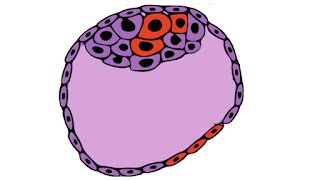Mosaic embryos have cells with different genetic makeups. This is due to spontaneous mutations during the early development of an embryo. Concerns arise due to potential birth defects, but there are success stories of mosaic embryos. Couples opting for assisted reproduction, like IVF, with mosaic embryos have achieved healthy pregnancies and births.
Mosaic Embryo Success Stories.
While individual experiences may be different. Here are five mosaic embryo success stories that showcase positive outcomes. These success stories highlight the potential for healthy pregnancies and births:
(1) Emma's Journey to Parenthood. Emma and her partner underwent IVF. During the IVF process, mosaic embryos were identified through PGT. Despite initial concerns, Emma successfully carried a pregnancy and their baby boy was born healthy.
(2) Jason and Lisa's Miracle Baby. After struggling with infertility, Jason and Lisa opted for IVF with mosaic embryo transfer. To their delight, the pregnancy progressed smoothly, and they welcomed a healthy baby girl. This challenges the notion that mosaic embryos always lead to complications.
(3) The Smith Family's Joyful Addition. The Smiths faced fertility issues and chose PGT to screen embryos. Although mosaic cells were detected, the family welcomed a healthy set of twins. This again showcases the positive potential of mosaic embryos in building families.
(4) Amanda's Positive Outcome. Amanda, diagnosed with infertility, decided on IVF with mosaic embryos. Despite concerns about genetic variations, Amanda had a successful pregnancy. Her daughter was born without any apparent health issues.
(5) David and Sarah's Journey of Hope. David and Sarah, after multiple unsuccessful fertility treatments, chose IVF with mosaic embryo transfer. Their perseverance paid off, resulting in a successful pregnancy and the birth of a healthy baby boy. This brings immense joy to their lives.
These success stories underscore the importance of personalized fertility treatments, advancements in genetic testing, and the potential for positive outcomes with mosaic embryos. It's essential to recognize that each fertility journey is unique. So, consulting with healthcare professionals is crucial for tailored guidance and informed decision-making.
Mosaic Embryo Birth Defects.
(I). Mosaic embryos have cells with different genetic makeups. This is due to spontaneous mutations during the early development of an embryo.
(2). Research explores the connection between mosaic embryos and potential birth defects.
(3). The severity of birth defects depends on the specific genetic changes in mosaic cells.
(4). Some mosaic embryos result in healthy pregnancies. On the other hand, some may be linked to developmental issues.
(5). Preimplantation genetic testing (PGT) during in vitro fertilization (IVF) helps identify and select embryos with lower genetic abnormality risks.
(6). PGT improves the chances of a healthy pregnancy by choosing embryos that are less likely to have birth defects.
(7). Ongoing scientific investigations aim to deepen our understanding of how mosaic embryos impact birth outcomes.
(8). While PGT enhances informed decision-making, complexities in predicting outcomes associated with mosaic embryos remain.
(9). Individuals seeking fertility treatments are encouraged to consult with healthcare providers for the latest insights based on scientific advancements.
(10). Simplifying the complexities of mosaic embryos contributes to better reproductive choices and outcomes.
Mosaic Embryo Success Rate.
Using mosaic embryos for in vitro fertilization (IVF) means some cells are normal, while others are not. Success rates vary due to factors like the type and extent of mosaicism, age, and health. It depends on each person and the fertility clinic. Scientists are always learning more, so success rates may change. It's best to talk to a fertility specialist for the latest information and personalized advice.








0 Comments
Kindly share your views